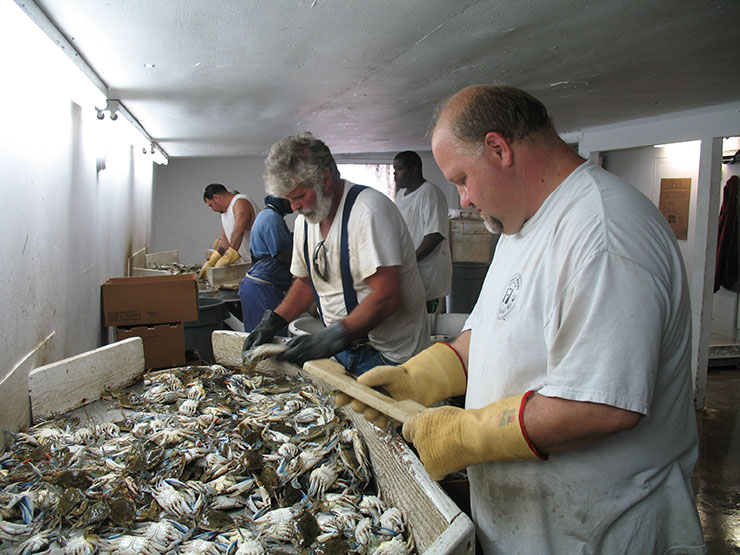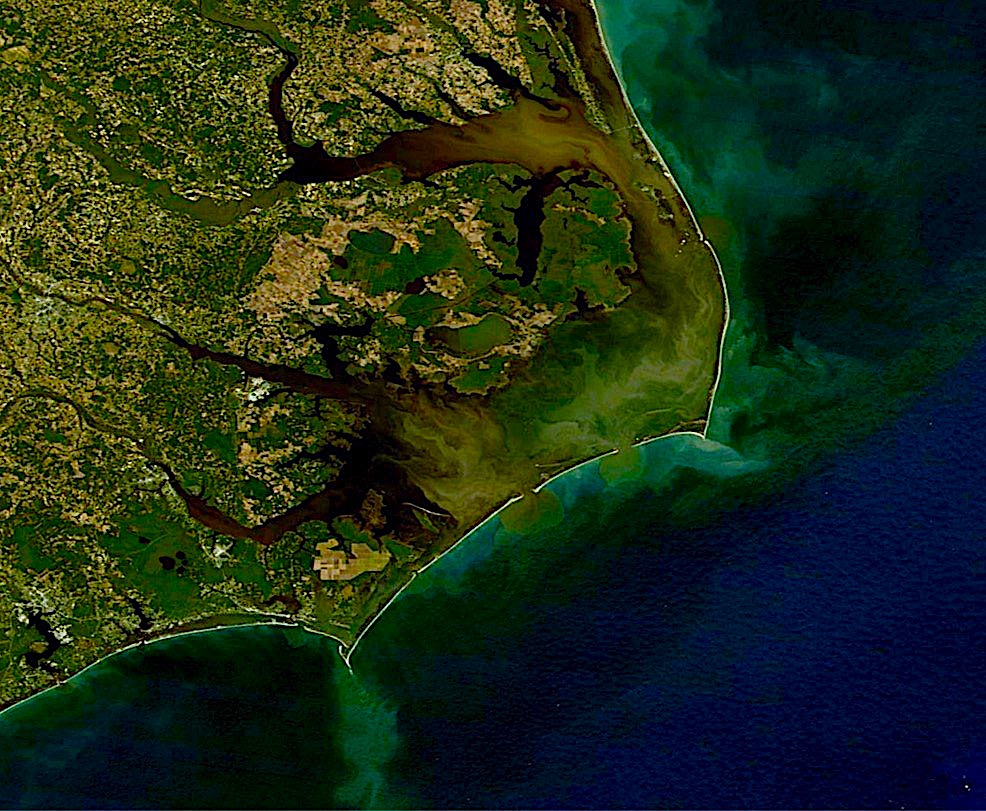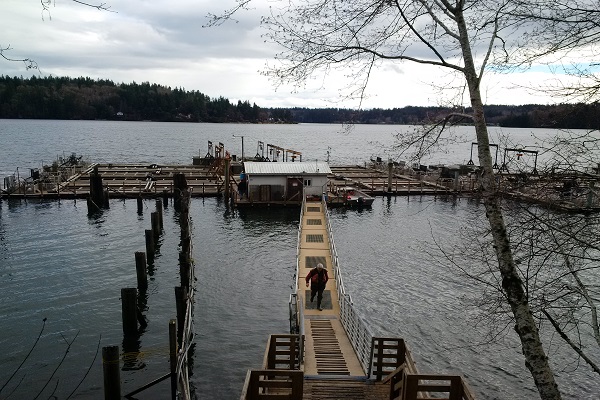NATURALIST’S NOTEBOOK: How to Nab a Crab

WORRIED ABOUT HOW THE KIDS WILL PASS THE TIME THIS SUMMER? ENCOURAGE THEM TO BE A LITTLE CRABBY.
Like fishing, recreational crabbing is a traditional pastime for many along North Carolina’s coast. Blue crabs are the typical targets, and the North Carolina Aquarium at Fort Fisher’s Canoeing the Salt Marsh outdoor exploration program shows participants the ins and outs of crabbing.
“I thoroughly enjoyed seeing the blue crab up close,” says Susan McElheny, who participated in the program last summer.
McElheny and her family spent a memorable afternoon paddling out to Zeke’s Island Estuarine Research Reserve near Fort Fisher to do some crabbing and explore native plants and wildlife. McElheny’s nephew, 11-year-old John, was particularly eager to learn about catching crab — he hoped his new skill would provide him an endless supply of crab legs.
Although the family enjoyed the experience, McElheny says the likelihood of them taking up crabbing is pretty slim.
“I’m from Charlotte and the rest of the family is from Michigan, neither are prime crabbing destinations,” she says. “However, we do [now] have a greater appreciation for the process.”
BEAUTIFUL SWIMMERS
Appreciation for blue crabs is one of the many things participants learn during Canoeing the Salt Marsh.
The scientific name for the blue crab, Callinectes sapidus, literally translates to “savory, beautiful swimmer.” Although they’re tasty to eat and beautiful to behold, blue crabs also are bullies, known for their aggressive behavior and sharp pinch.
“Experience is critical in handling blue crabs,” says Matt Lettrich of the Fort Fisher Aquarium.
Having been nipped numerous times, he encourages newbie crabbers to wear gloves, pick the crab up from behind, and be prepared for some trial and error.
“Blue crabs are North Carolina’s number one fishery,” he tells McElheny’s group. “Not only are they important economically, but as bottom feeders they also are a critical step in the food chain.”
North Carolina’s Albemarle and Pamlico sounds support one of the largest blue crab fisheries in the nation, along with Maryland’s Chesapeake Bay and Louisiana.
To prevent overfishing, the North Carolina Division of Marine Fisheries prohibits fishermen from keeping crabs under five inches wide, point-to-point, Lettich explains. Recreational catches are limited to 50 crabs per day.
So much for Johnny’s endless supply of crab legs.
TO CATCH A CRAB
Blue crabs aren’t picky eaters, usually sifting through marsh mud to nibble on dead fish or mollusks.
Menhaden are the bait of choice for most commercial fishermen because of its abundance and low cost. Recreational crabbers typically choose scraps of chicken or turkey necks, thus giving them the unfortunate moniker, “chicken neckers.”
Commercial fishermen crab using pots, or cubed structures made of chicken wire or polyvinyl chloride (PVC) coated wire, attached to a color-coded buoy. Crabs are lured into the pots with bait. Once inside and unable to reach the food, they swim to the upper portion of the pot, which crabbers call “the parlor,” to try to escape. Undersized crabs escape through special openings called cull rings.
Recreational crabbing methods are more low tech and less expensive. A hand line, a baited string attached to a weight, and a dip net all work nicely. This method is ideal for family and friends because it requires a team effort. Using a wooden block as a weight, attach it to a baited string about seven feet in length. Throw the baited line into a shallow area and slowly pull it across the ocean floor until a crab catches the bait. Once the crab has tucked into its meal, have a partner scoop it up with a dip net.
Blue crabbing with a hand line and a dip net is the method of choice for the Canoeing the Salt Marsh programs. In addition to proximity, the aquarium uses Zeke’s Island for the program because the shallow waters and grassy areas make it the ideal spot for blue crabs of all sizes and fishermen of all abilities. — K.B.
- To find out more about outdoor programs at the North Carolina Aquariums in Roanoke Island, Pine Knoll Shores and Fort Fisher, visit www.ncaquariums.com.
- To learn more about blue crabs, visit North Carolina Sea Grant’s YouTube channel, www.youtube.com/ncseagrant, and view clips from the documentary The Beautiful Blue Crab.
- For more information about recreational blue crab regulations, visit the N.C. Division of Marine Fisheries online: http://portal.ncdenr.org/web/mf/.
This article was published in the Spring 2010 issue of Coastwatch.
For contact information and reprint requests, visit ncseagrant.ncsu.edu/coastwatch/contact/.


